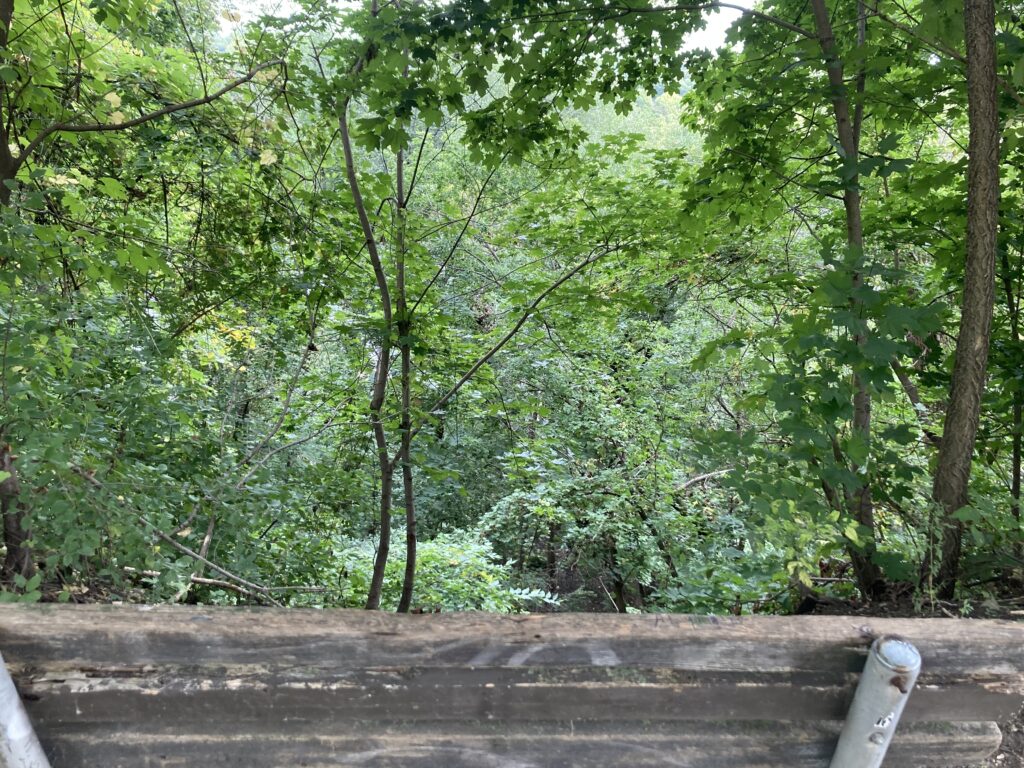4.2 miles
minnehaha falls and back
67 degrees
A good run! I felt strong and relaxed and able to run farther without needing to stop for a walk break. More color on the trees today, lots of orange and red, not as much yellow.
10 Things
- workers in bright yellow vests at the Cleveland Overlook next to a big white truck with a long arm and a bucket — trimming trees?
- slashes of orange everywhere, not big stretches of it, only a dot here, a dot there
- a fine, cool spray coming off of the falls
- the smell of fried something at the falls — Sea Salt?
- chickadeedeedeedee
- kids laughing and yelling on a playground hidden behind trees
- a woman walking over to a man near the ledge etched with “The Song of Hiawatha,” saying, I like it here
- that tall grass smell that reminds me of cilantro, almost — the common thread: the smell of freshness? and green?
- the dirt trail that winds through the small wood near the ford bridge looked muddy
- a roller skier on the trail — I don’t remember the click clack sound of his poles, just the fast swinging of his arms as he propelled himself forward
As I ran, I thought about water and erosion and how that might translate into a new form and/or way to play around with my already existing poems. I had a few ideas:
- water as causing cracks, fissures, splitting words open. New breaks in the lines, in individual words? Making new words out of the already existing ones?
- water as swirling and falling. A mixing and swirling and wheeling of words?
- water as wearing down, peeling away layers, condensing forms to their essence
Read (and heard) an amazing poem this morning:
A Bookshelf/ Hua Xi
My father read a mountain aloud.
Opened to a page
where a green bird lands on a thunderclap.
Named for the billowing hands of
brittle blue flowers.
As if the unfinished poetry of the paraffin
is pulled aside like scenery,
so that I may write by the only light I know.
My father read only his one life and recited
the last line over and over.
The book is written in giant letters of fog
that wander like goats across the alpine pastures.
The moon is dog-eared as if the treetops looking up
have studied the idea of love too much.
On a page with some scattered pine needles,
a voice goes on calling out to me.
My father learned to read
in a one-room schoolhouse,
and never read a poem.
A little herd of lightning
gets spoken out loud in the dark.
Change
is scenic and sudden.
One year, I came home
and all the leaves fell off my father.
After that,
he was winter.
I’m thinking about a poem as a life and those last lines about her father and how he became winter. Wow.

